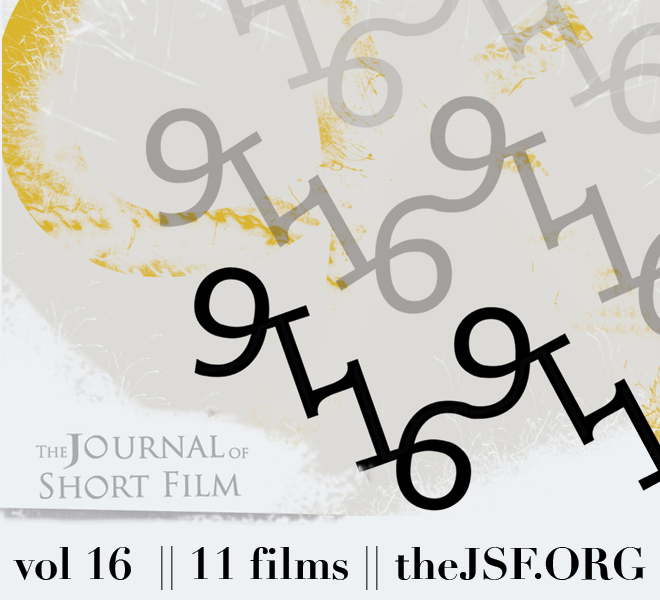Columbus is home to many inspired creatures, engaging in multifaceted often overlapping worlds of creative production. I met Karl Mechem in 2006, as he was entering his second year publishing a quarterly collection of short films.
Karl’s inspiration came from, among many sources, a trip to Mali in 2004 while shooting a low-fi documentary film. Upon meeting another filmmaker doing much the same thing, he recognized the revolutionary access to the medium due largely to the falling cost of DV [digital video] production. Karl began wondering how audiences would ever see all of these new films.
Karl Mechem: Democratized film making really called for democratized distribution, so it wasn’t rocket science to start a DVD journal. But there was also a longstanding need for more distribution of short film, in general.
Oh wait, I also blame the 2004 election and the sick feelings afterward. Oh, and the fact that I just wanted to see more short film and how better to do so than to ask for submissions.
Plus I was bored and marginally employed. There’s never really just one origin to anything, is there?
Daniel King: The films distributed through the Journal cover such a diverse landscape… from more or less straightforward documentaries, to extremely personal narratives and even animation and cutting-edge experimental work. Even within a single volume (7-10 films) the blend of visual languages, stories, and themes is surprising. Can you talk to me about your choices in the curation process for the Journal?
KM: That diversity is no accident. Quick note: the journal’s editors are the real experts, and I’m just the publisher; the thoughtful reviewing/curation is more their work than mine. But yes, mixing all of the genres together makes for eclectic volumes. I hoped it would create something more than the sum of the parts. Historically, all film genres have influenced the others, so it made sense to put the best films in each category next to each other. Sometimes you can see solid evidence of cross-pollination, sometimes you just hope you can encourage it.
It feels like judging apples and oranges, sometimes, since all of the submissions are so different. But as long as there is quality and thought and creativity there, we’re happy. I’ve heard some complain that the volumes are a little head-spinning, but I think that’s healthy.
“I think in a few years filmmakers and -viewers will have many more options via a much more decentralized digital world, including options that are economically sustainable.” – KM
DK: To what extent do the films on the Journal represent local talent?
KM: Including local talent has never been part of our mission, which is why it’s so remarkable that there have been many people from the area in the JSF. I won’t list any names lest I leave someone out, but every couple volumes someone from c-bus or central Ohio is included. And, considering we’re publishing some of the best short films made worldwide, that’s an impressive ratio. It’s great proof that there is a lot of filmmaking talent in the area.
DK: Today there are many young people wanting to build on models of independent web based film production and distribution, leading to a very different dynamic between the makers and the viewers. Do you have any thoughts on where you see that heading?
KM: I can see this as the future of independent film, but people need to be patient. Technology has thrown us into a transition period, and it’ll take a while for us to figure out all the options, settle on the best models, and learn the new skills. (And the audiences will have to catch up, too.) I think in a few years filmmakers and -viewers will have many more options via a much more decentralized digital world, including options that are economically sustainable.
But that is years away. In the meantime, filmmakers should spend their time making films and improving themselves. Thankfully, most artists are familiar with the concept of day jobs, late nights, sharing, volunteering, adapting, coping, and working really hard without any concrete promise (or measure) of “success.” So I think hard work and patience will win the day. And probably Google.
DK: So, with that in mind, why is the Journal on DVD and not an online magazine with streaming video?
KM: Quality and permanence, mostly. In 2004 the quality of streaming video was awful. We’ve always tried to present the films at the highest quality possible, and even DVD is a compromise. Short film deserves a permanent spot on our bookshelves, right next to the other books and DVDs.
So the DVD format seemed like a good, cost effective solution. But now, digital delivery can give us both quality and permanence (on hard drives, anyway), so we’re certainly considering it.
DK: Tell me about some of the collaborative volumes, in which the Journal has partnered with other organizations for “themed” content.
KM: Most recently, the JSF put out a volume of selections from the Art & Tech residency program at the Wexner Center (Vol.14). That was especially fun since it was curated by Jennifer Lange and Paul Hill who are at the Wexner and who have been a part of the journal from its beginning.
In 2007 we partnered with WITNESS.org to put together a volume of social issues documentaries (Vol.9). WITNESS helps people in hot spots like Burma and Chechnya make and share videos, so that collection was pretty moving and intense.
And in 2008 we put together a volume of films (Vol.11) from Portland, OR, with the help of filmmaker Karl Lind. That place has to be in the top 5 fecund filmmaking scenes in the U.S., and it was great to get a snapshot of it (via 26 films on one volume!).
DK: What is your big picture plan, even outside of your work with the Journal?
KM: While I want to finish a couple personal film projects, in general I think I’ll be moving more toward the application side of the film and media world. I’m more interested in education and pedagogy, these days, and those fields are in desperate need of reform. I like finding the intersections between fields and seeing how ideas and methods can be shared. Education could benefit a lot from more visual and digital tools.
Hmm, what else? I’m also writing a screenplay for Transformers 3 that has even more transforming robots than ever.
But if I had a million dollars I’d probably just sink it into a bamboo farm or synth-meat research or an org. that gives out micro-grants to entrepreneurs and punks for projects and mayhem.
MORE:
Volume 15 premiered in July, review here
www.thejsf.org
JSF on Facebook
Filed under: Art & Film, Columbus, film, Interviews, JSF, Columbus, dvd magazine, indie publishing, Journal of Short Film, JSF, Karl Mechem, mechem, OH, OHintro, Portland, Wexner Center, WITNESS




A very nice interview.
If Mr. Mechem wants to dive into educational reform, I support any ideas he might come up with.
What about video games designed for the classroom? Because I think a bird told me about something in the works… DK